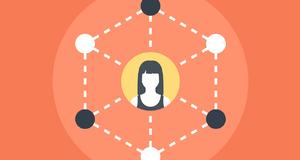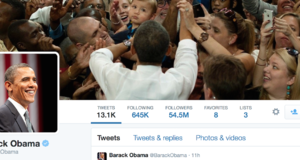From Elon Journal of Undergraduate Research in Communications VOL. 3 NO. 2The Invisible Become Visible: An Analysis of How People Experiencing Homelessness Use Social MediaV. DiscussionThis research examined how people experiencing homelessness use the social media platformsof blogs, Facebook, Twitter, and LinkedIn. It also looked at how members of this population gain access to computers to use this type of media. This research is important because people experiencing homelessness are a largely misunderstood population. By learning more about how this population uses social media, other people will gain a deeper understanding of the homeless condition. Respondents in this study were eager to discuss their involvement with these social media outlets and to share how they locate computers. This research discovered that people experiencing homelessness use Facebook because it allows them to connect with others and find support in a safe space. The respondents perceive the main benefit of Facebook to be maintaining relationships with their family and friends who are scattered across the country. People experiencing homelessness think it is invaluable to maintain these social connections because this type of support helps them overcome challenges. Respondents argue that Facebook is the most beneficial social networking tool to use, and they are hesitant to use Twitter, LinkedIn, or create their own blogs. PrivacyOne of the most interesting ideas discovered by this research is the importance of privacy on social media websites. Many respondents view their Facebook profile as a safe space where they are in control of how their image is presented to the community. Therefore, they are leery of permitting other people to enter that safe space. This causes respondents to be cautious when accepting friend requests, joining groups, posting photos, and commenting on people's walls. Respondents are also very aware of how they present themselves in their profiles because information remains on the Internet forever. This is an interesting discovery because people experiencing homelessness rarely have the opportunity to control other people's perceptions of them, causing them to have a heightened awareness of the power of their Facebook profiles. This finding makes sense because a reduction of privacy and feelings of personal safety often accompany being homeless. Computer TrainingPeople experiencing homelessness do not often have the opportunity to attend computer classes that teach them necessary skills. Therefore, unless a person was familiar with using a computer before they became homeless, they are not able to acquire the computer skills they need to use a wide variety of social networks. For example, clients at The Center are offered classes that teach them how to create a resume,set up an e-mail account, and do other basic tasks. The clients can only learn additional skills, such as social media skills, if a teacher or computer specialist volunteers to hold classes at the day shelter. For example, in June 2011, a professor from a local university held a one-month class at The Center that expanded clients' knowledge of how to use social media, particularly Facebook. Twitter was mentioned in this class, but partici-pants found it challenging to maintain their accounts after the class ended. In conclusion, respondents are more willing to use other social networks if they learn the necessary computer skills to use these social media tools. Therefore, it would be beneficial for homeless service providers to offer these computer skills classes to their clients because, without the necessary knowledge, clients may become victims of the digital divide. Homeless Service ProvidersNo respondents mentioned using Facebook or Twitter as a tool to locate resources or services for them. Most respondents were surprised when asked if they knew that The Center has Facebook and Twitter pages. One possible reason for this is that many non-profit service providers are not regularly updating their Facebook or Twitter accounts with valuable information for their clients. For example, The Center is one of the largest homeless service providers in this central North Carolina city. However, this organization does not update its Twitter account with information about services provided or opportunities for their clients. In addition, The Center's Facebook page primarily serves as a public relations tool because it provides photos, videos, and calls for donations. This same description can be applied to other service providers in this central North Carolina city. Therefore, if service providers' Facebook and Twitter accounts provide pertinent information to their clients, people experiencing homelessness may be more likely to create Twitter accounts to follow this information or to become fans of the service provider's Facebook page. It is important for people experiencing homelessness to use a variety of social media outlets. Homeless service providers play a large role in providing members of this population with the necessary computer skills to do this. They can also influence how people experiencing homelessness perceive social media. If service providers share valuable information with their clients on their social media accounts, people experiencing homelessness may be more likely to use Twitter or other social media tools. The "We Are Visible" ProjectTwitter and other social media tools are changing the way that communities perceive people experiencing homelessness. These benefits are not largely understood by homeless individuals in this central North Carolina city. No respondent was aware of Mark Horvath's "We Are Visible" project and many did not realize that the benefits of Twitter extend far beyond a person's ability to update others about their daily activities. Twitter can be used to locate resources, find out services available to people experiencing homelessness,and find links to helpful websites. VI. ConclusionThis research found that people experiencing homelessness in this central North Carolina city use Facebook as their main social networking tool. They spend about one hour per day on Facebook connecting with family and friends, finding support, and sharing ideas in a "safe space." These same respondents are hesitant to use Twitter because they do not want to update other people about every moment of their lives. No respondents had LinkedIn accounts or blogs. This research leads to the following two conclusions: 1) Shelters and other homeless service providers need to provide classes about how to use social media so people experiencing homelessness have the confidence they need to engage with these websites; and 2) People experiencing homelessness may bemore likely to use Facebook and Twitter if service providers post valuable information for their clients on these social media pages. Homeless service providers need to offer computer training classes and share valuable information with clients on their social media websites. If this happens, more people experiencing homelessness will be plugged into social media. This will create a ripple effect in the community as housed people become more aware of the homeless condition, causing them to put a face to homelessness. Like @beckyblanton said, social media can change homeless individuals' worlds by providing the community with actual stories of people who are homeless (Horvath, 2010). AcknowledgmentsI am thankful to Dr. Naeemah Clark at Elon University for her supervision and advice, without which this article could not be published. I also appreciate the numerous reviewers who have helped edit this article. Finally, I am grateful to the people experiencing homelessness I interviewed for sharing their perspectiveswith me. ReferencesAdams, A. (2011, March 2). Homeless connecting with family, friends through social networking. Retrieved from Deseret News website: http://www.deseretnews.com/article/705367901/Homeless-connectingwith-familyfriends-through-social-networking.html Best, R. (2010). Situation or social problem: The influence of events on media coverage of homelessness. Social Problems, 57(1), 74-91. Retrieved from http://www.jstor.org/discover/10.1525/sp.2010.57.1.74?uid=3739776&uid=2&uid=4&uid=3739256&sid=56196123083 Bure, C. (2006). Digital inclusion without social inclusion. Journal of Community Informatics, 2(2), 116-133. Retrieved from http://ci-journal.net/index.php/ciej/article/view/251/212 Eyrich-Garg, K. (2011). Sheltered in cyberspace? Computer use among the unsheltered 'street' homeless. Computers in Human Behavior, 27(1), 296-303. Retrieved from http://www.sciencedirect.com/science/article/pii/S0747563210002505 Federal definition of homeless. (2011, December 5). Retrieved from U.S. Department of Housing and Urban Development website: http://hudhre.info/documents/HEARTH_HomelessDefinition_FinalRule.pdf Gustafson, D. (2011, August 26). Invisiblepeople.tv aims to empower homeless through social media. PBS Newshour. Retrieved from: http://www.pbs.org/newshour/ Hersberger, J. (2003). A qualitative approach to examining information transfer via social networks among homeless populations. The New Review of Information Behaviour Research: Studies of Information Seeking in Context, 4(1), 95-108. Retrieved from http://libres.uncg.edu/ir/uncg/f/j_Hersberger_Qualitative_2003.pdf Hersberger, J. (2001). Everyday information needs and information sources of homeless parents. The New Review of Information Behaviour Resources: Studies of Information Seeking in Context, 2, 119-134. Retrieved from http://libres.uncg.edu/ir/uncg/f/J_Hersberger_Everyday_2001.pdf Holt, L. E., & Holt, G. E. (2010). The Homeless: How should our libraries help them? In Public library services for the poor: Doing all we can (pp.111-121). Chicago: American Library Association. Horvath, M. (2010). Why social media? Retrieved from We Are Visible website: http://wearevisible.com/whysocial-media.html Hwang, S., Kirst, M., Chiu, S., Tolomiczenko, G., Kiss, A., Cowan, L. , & Levinson, W. (2009). Multidimensional social support and the health of homeless individuals. Journal of Urban Health, 86(5), 791-803. Retrieved from http://www.ncbi.nlm.nih.gov/pmc/articles/PMC2729873/?tool=pubmed Kline, D., & Burstein, D. (2005). Blog!: How the newest media revolution is changing politics, business, and culture. CDS Books. Le Dantec, C., & Edwards, W. K. (2008a). Designs on dignity: Perceptions of technology among the homeless. Retrieved from Christopher A. Le Dantec website: http://www.ledantec.net/wp-content/ uploads/2010/02/1148-ledantec.pdf Le Dantec, C. (2008b). Life at the margins: Assessing the role of technology for the urban homeless. Interactions, 15(5), 24-27. Retrieved from http://www.ledantec.net/wp-content/uploads/2010/02/p24-le_dantec-small.pdf Roberson, J., & Nardi, B. (2010). Survival needs and social inclusion: Technology use among the homeless. CSCW, 445-448. Retrieved from http://www.artifex.org/~bonnie/351-roberson.pdf Schmitz, J. (1997). Structural relations, electronic media, and social change: The public electronic network and the homeless. In Virtual culture: Identity & communication in cyberspace (pp. 80-101). London: SAGE Publications. Social media—the best defense against homelessness. (2010, November 2). Retrieved from Tonic website: http://www.tonic.com/post/we-are-visible-mark-horvath-social-media-homeless/ State totals. (2011, July 6). Retrieved from North Carolina Coalition to End Homelessness website: http://www.ncceh.org/PITdata/ Swenson Miller, K., Bunch-Harrison, S., Brumbaugh, B., Sankaran Kutty, R., & FitzGerald, K. (2005). The meaning of computers to a group of men who are homeless. The American Journal of Occupational Therapy, 59(2), 191-197. Retrieved from http://ajot.aotapress.net/content/59/2/191.full.pdf Tabb, J. (2011, January 11). Helping the homeless be heard (with social media). Retrieved from The Case Foundation website: http://www.casefoundation.org/blog/helping-homeless-be-heard-social-media Taylor, A. (2011). Social media as a tool for inclusion. Retrieved from Homelessness Resource Center website: http://homeless.samhsa.gov/Resource/View.aspx?id=51607&AspxAutoDetectCookieSupport=1 Yost, M. (2009, December). I blog, therefore I am. Retrieved from Mary Yost website: http://student.elon.edu/myost3/_pages/Writing%20Samples%20Page.html Appendix A Respondent Demographics
Appendix B Interview Questions 1. On a daily basis, how often do you use a computer?a. Where do you access a computer?b. How much computer experience have you had? 2. Do you use Facebook? Why? What information do you seek on Facebook?a. Twitter? Why?i. What information do you seek on Twitter?b. LinkedIn? Why?i. Why did you signup for this service?c. Blogs? Why?i. What information do you share on your blog or seek on others' blogs? 3. What do you think are the benefits of social media to people experiencing homelessness?a. Why is social media a powerful way for people experiencing homelessness to connect with others? 4. How did you learn to use these social media outlets?a. Have you ever heard of WeAreVisible.com? Suggested Reading from Inquiries Journal
Inquiries Journal provides undergraduate and graduate students around the world a platform for the wide dissemination of academic work over a range of core disciplines. Representing the work of students from hundreds of institutions around the globe, Inquiries Journal's large database of academic articles is completely free. Learn more | Blog | Submit Latest in Business & Communications |



















